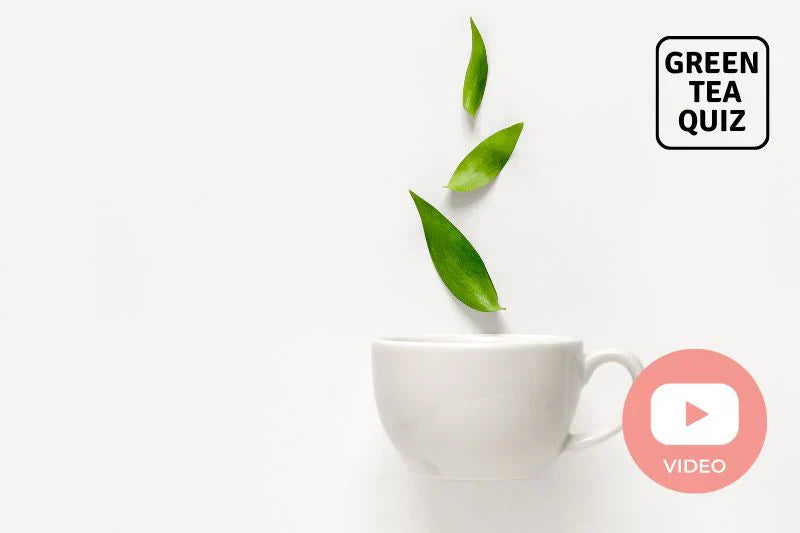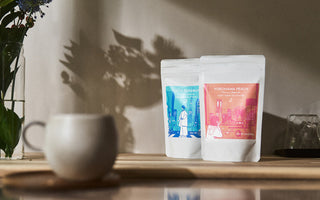Most of us are familiar with the soothing, aromatic product that is green tea.
From simple cups of green tea-infused hot water to sweet and frothy matcha lattes, this superfood tea has been used and loved for thousands of years for its complex flavor profile and range of powerful health benefits.
But one of the lesser-known ways to enjoy this potent natural delicacy is by pickling it and adding it to savory dishes for a sweet, sour, and umami-packed flavor punch.
Pickled green tea is a condiment that enhances the flavor of many traditional and non-traditional dishes while introducing a range of probiotics and other gut-supportive health benefits to your meals.
Let’s explore the versatile world of pickled green tea and how you can incorporate it into your diet for elevated, impressive dishes and better gut health.
Pickled Green Tea Is An Ancient, Traditional Product With Many Healing Health Benefits
Pickled green tea is made by fermenting whole, rehydrated green tea leaves in mirin or some other type of natural wine for several days or weeks. Often, it’s fermented alongside other aromatics like garlic, ginger, daikon, spring onions, and spices for an extra savory and delicious condiment that can be added to all sorts of dishes.
Like most fermented products, the pickling process creates a perfect environment for certain probiotics and microbes to thrive, many of which are crucial for maintaining a healthy gut and metabolism.
This is why so many people use fermented products like pickled green tea to help regulate their metabolic function and strengthen immunity. But even aside from the pickled health benefits, green tea is a powerhouse of nutrients and antioxidants that further increase the product’s overall health value.
Pickled Green Tea Unlocks All Major Flavor Profiles: Sweet, Salty, Sour, Bitter, And Umami
While bitterness is the dominant flavor note in most strains of green tea, it’s certainly not the only one—especially after fermentation. Through the pickling process, the green tea becomes sharper, tangier, sweeter, more floral, and less grassy, creating a flavor explosion in the mouth.
There’s sharp sourness from the mirin or choice of acid, saltiness from the salt or soy sauce, sweetness from the rehydrated leaves, and bitterness from the green tea’s high polyphenol count—all of which create a perfectly balanced umami flavor that is deeply satisfying and delicious.
There Are Lots Of Ways To Enjoy Pickled Green Tea
If you’re new to the world of pickled green tea, you might feel unsure about how to incorporate it into your meals in a truly complementary way.
Like most pickled condiments, pickled green tea makes a great side to lunches and dinners for a burst of bright, fragrant flavor.
Here are a few simple ideas for enjoying pickled green tea that will keep your meals interesting, healthy, and packed full of flavor:
-
Tossed into salads
One of the most popular ways to eat pickled green tea is to toss it into your favorite salad. The sharp acidity of this condiment makes it a great enhancement to bright, summery salads or as a way to elevate an average salad into something special.
If you don’t want the whole leaves mixed into your salad, you can also finely chop up the pickle and shake it into your salad dressing for a tangy, floral vinaigrette.

-
In stir fries
Adding pickled green tea to your stir fry as part of the main dish or even served on the side is a great way to enjoy the flavor and benefits of this condiment. Choose a pickle with plenty of garlic and ginger in it to enhance the stir fry’s natural flavors.
-
With noodles
Noodles make a great base for all sorts of creative, delicious flavors, spices, sauces, and condiments. Next time you want to take your udon or soba noodles to the next level, add some pickled green tea to the bowl and let it make friends with your chili crisp for a super umami sauce packed with sour, sweet, and spicy flavors.
-
On rice
Similarly to noodles, rice makes a perfect vessel for any sauces or condiments you want to add. You can eat pickled green tea over soft sushi rice alongside a jammy (or crispy fried) egg for a very balanced and healthy meal that satisfies every flavor craving.
-
In a burger or wrap
If you want to make a burger or wrap inspired by Eastern or South Asian flavors, piling on some pickled green tea is a great place to start.
Many of the best wraps, burgers, and even tacos include a spicy or sour pickled condiment. You can even mix your pickles and pickled tea for maximum satisfaction!
Pickled Green Tea Is A Big Part Of Asian Culture And History
While green tea has strong cultural and historical ties to Japan and China in particular, the art of pickling tea leaves as a delicious and healthy condiment is not restricted to just one part of Asia.
Burma, Taiwan, and Thailand are just a few other countries that have practiced tea pickling for hundreds, if not thousands of years. Burmese pickled black tea is called Lahpet and is one of the world's most popular forms of pickled tea.
You can use all kinds of tea to make pickled tea condiments. Black tea, green tea, oolong tea, and pu-erh tea are just a few examples. Many of them have unique fermentation styles, such as red wine fermentation, rice wine fermentation, or lactic acid fermentation (using aged milk products to ferment tea), that produce unique flavor profiles and enhance dishes in different ways.
There are many reasons why pickled tea, in all its beautiful variations, has maintained popularity for so long. It’s healthy, versatile, delicious, and can be adapted to all kinds of flavor preferences or cultural influences.
From Sip To Snack
If you love everything umami, pickled green tea is for you! This fragrant, versatile, and brightly flavored Asian condiment is gut-healthy and full of nutritional benefits.
Containing a burst of umami flavor and immune-boosting probiotics, you can add this unique and delicious fermented condiment to just about every dish you enjoy for breakfast, lunch, dinner, or a snack.
Get Free Bonus Books

Sign up for free to the Green Tea Club to get advice and exclusive articles about how to choose Japanese Tea, and tips, tricks, and recipes for enjoying Japanese tea.
About the author
Kei Nishida
Author, CEO Dream of Japan
Certification: PMP, BS in Computer Science
Education: Western Washington University
Kei Nishida is a passionate Japanese green tea connoisseur, writer, and the founder and CEO of Japanese Green Tea Co., a Dream of Japan Company.
Driven by a deep desire to share the rich flavors of his homeland, he established the only company that sources premium tea grown in nutrient-rich sugarcane soil—earning multiple Global Tea Champion awards.
Expanding his mission of introducing Japan’s finest to the world, Kei pioneered the launch of the first-ever Sumiyaki charcoal-roasted coffee through Japanese Coffee Co. He also brought the artistry of traditional Japanese craftsmanship to the global market by making katana-style handmade knives—crafted by a renowned katana maker—available outside Japan for the first time through Japanese Knife Co.
Kei’s journey continues as he uncovers and shares Japan’s hidden treasures with the world.
Learn more about Kei






